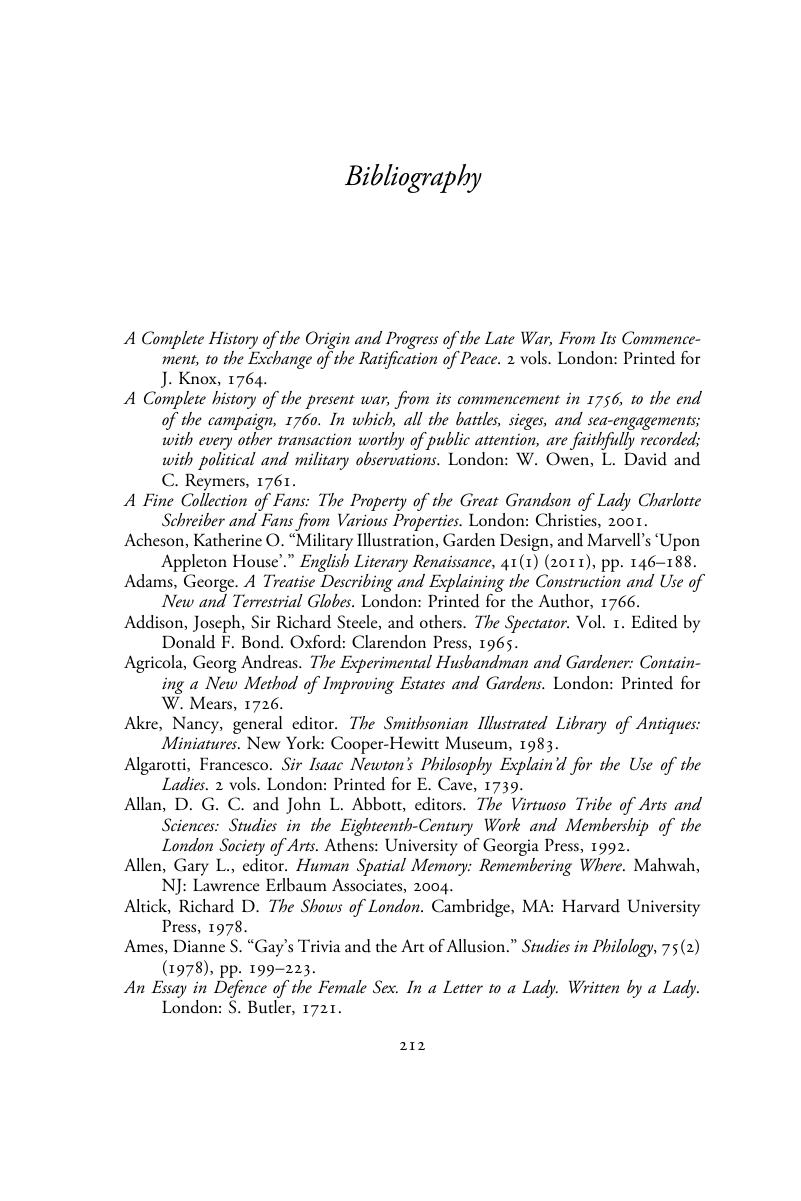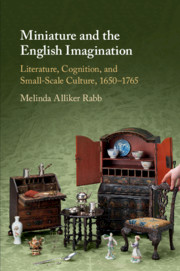Book contents
- Miniature and the English Imagination
- Miniature and the English Imagination
- Copyright page
- Dedication
- Contents
- Acknowledgments
- Chapter 1 Introduction to an Age of Small-Scale
- Chapter 2 Swift and Miniature: Cogito ergo Gulliver
- Chapter 3 Lilliput Recalibrated: Johnson and Others
- Chapter 4 Toying with Thought: Pope, Gay, Dodsley
- Chapter 5 War in Miniature: Models, Maps, Medals, and Sterne’s Tristram Shandy
- Chapter 6 Science and Miniature: animal rationis capax and homo depictor
- Coda
- Bibliography
- Index
- References
Bibliography
Published online by Cambridge University Press: 08 February 2019
- Miniature and the English Imagination
- Miniature and the English Imagination
- Copyright page
- Dedication
- Contents
- Acknowledgments
- Chapter 1 Introduction to an Age of Small-Scale
- Chapter 2 Swift and Miniature: Cogito ergo Gulliver
- Chapter 3 Lilliput Recalibrated: Johnson and Others
- Chapter 4 Toying with Thought: Pope, Gay, Dodsley
- Chapter 5 War in Miniature: Models, Maps, Medals, and Sterne’s Tristram Shandy
- Chapter 6 Science and Miniature: animal rationis capax and homo depictor
- Coda
- Bibliography
- Index
- References
Summary

- Type
- Chapter
- Information
- Miniature and the English ImaginationLiterature, Cognition, and Small-Scale Culture, 1650–1765, pp. 212 - 231Publisher: Cambridge University PressPrint publication year: 2019

